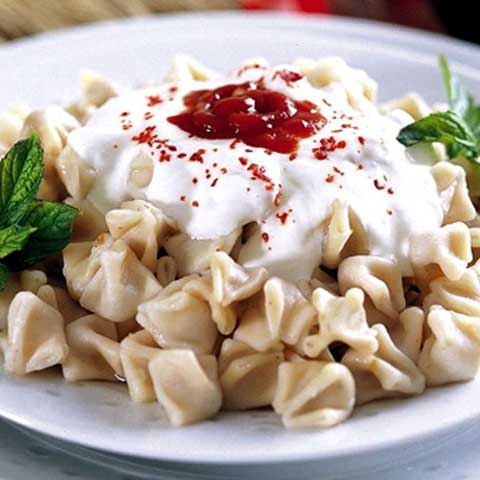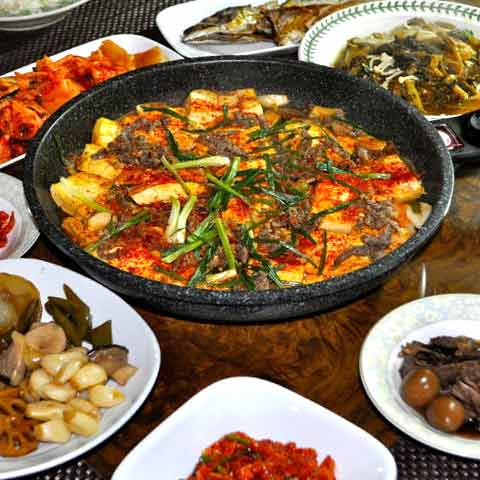
Manti (Turkish ravioli)
You can easily calculate the calorie and nutritional values of Manti (Turkish ravioli) for different amounts (tbsp, serving) by clicking on the CALCULATE button. You can analyze your nutrition history by adding food into your nutrition diary.
How many calories are in Manti (Turkish ravioli)?
Manti (Turkish ravioli) contains 292 calories per 100 grams. This value corresponds to about 15% of the daily energy expenditure of an adult burning about 2000 calories a day.
Calorie, carbohydrate, protein and fat percentages of Manti (Turkish ravioli)
100 grams of Manti (Turkish ravioli) contains 45.52 grams of carbohydrate, 12.63 grams of protein and 5.71 grams of fat. It consist of 71% carbohydrate, 20% protein and 9% fat. 64% of total calories of the food are from carbohydrate, 18% are from protein, 18% are from fat.
100 grams of Manti (Turkish ravioli) is approximately 15% of daily carbohydrate needs, 25% of protein needs and 9% of fat needs of an adult consuming about 2000 calories of energy a day.
Recommended percentages are 50-55% carbohydrate, 15-20% protein and 20-30% fat. Total nutrition content should be close to these percentages for healthy eating.
Calculate nutritional values of Manti (Turkish ravioli)
292 kcal
100 gram(s)
| Amount | 100 g |
|---|---|
| Calorie | 292 kcal |
| Carbohydrate, by difference | 45.52 g |
| Protein | 12.63 g |
| Total lipid (fat) | 5.71 g |
| Water | 30.44 g |
| Fiber, total dietary | 4.01 g |
| Calcium, Ca | 21 mg |
| Iron, Fe | 1.52 mg |
| Magnesium, Mg | 26 mg |
| Phosphorus, P | 152 mg |
| Potassium, K | 240 mg |
| Sodium, Na | 563 mg |
| Zinc, Zn | 1.98 mg |
| Thiamin | 0.187 mg |
| Riboflavin | 0.112 mg |
| Vitamin B-6 | 0.083 mg |
| Ash | 1.7 g |
| Source | ANONYMOUS |
How many calories are in other foods in the food group Meals, Entrees, and Side Dishes?
Some of other foods in the food group Meals, Entrees, and Side Dishes are listed below. You can learn how many calories are contained in food by clicking on the relevant food and reach other nutritional values, especially carbohydrate, protein and fat.
